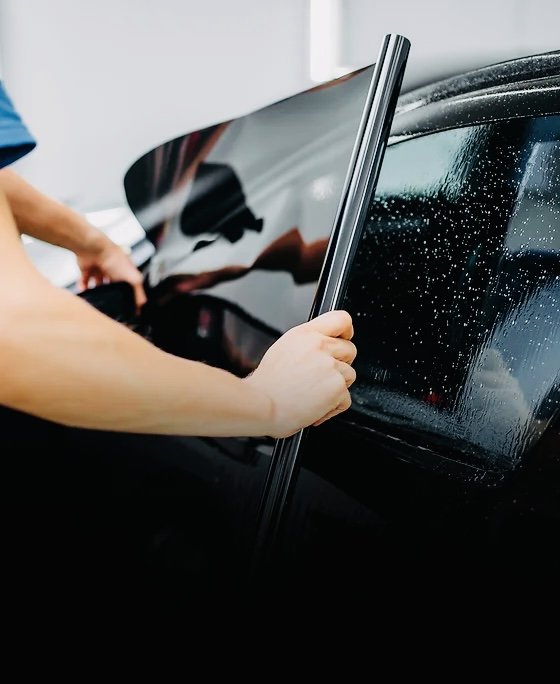Your Comprehensive Guide to Do It Yourself Window Tinting: Tips and Techniques
Undertaking a Do it yourself home window tinting task provides a chance to boost both the performance and appearances of your space. Prior to getting started on this endeavor, it is crucial to browse the complexities of local tinting laws and select a suitable movie that lines up with your goals.
Understanding Window Tinting Laws
Browsing the elaborate landscape of home window tinting legislations is necessary for any kind of DIY fanatic seeking to improve their vehicle's aesthetics and comfort. Each state in the united state has certain guidelines concerning the allowable levels of color on numerous home windows, which can substantially impact your decision-making procedure.
Commonly, these legislations dictate the maximum permitted Noticeable Light Transmission (VLT) percent, which describes the amount of light that can pass through the tinted windows. For example, some states allow only a certain percentage of tint on the front windscreen, while enabling darker tones on back home windows. Conformity with these laws is important, as failing to adhere can cause fines or the demand to remove the color completely.
In addition, there are commonly differences between traveler lorries and business lorries, with different guidelines applying to each category. It's a good idea to consult your neighborhood Department of Motor Vehicles or equivalent authority to gather accurate info tailored to your area. Comprehending these regulations not only ensures lawful compliance yet likewise boosts security by maintaining visibility and avoiding potential hazards while driving.
Selecting the Right Tint Movie
Selecting the ideal color film is a critical action in the DIY window tinting process, as it straight affects both the appearance and performance of your lorry's windows. Numerous elements ought to guide your choice, consisting of the kind of movie, its legal conformity, and your desired results.
First, consider the different kinds of color movies available: dyed, metalized, ceramic, and hybrid. Dyed films provide a fundamental degree of privacy and heat decrease however may fade gradually. Metalized films supply boosted heat rejection and toughness but can interfere with electronic signals. Ceramic movies, while more pricey, supply superior heat resistance and UV defense without signal disturbance.
Following, guarantee that the movie sticks to regional laws concerning noticeable light transmission (VLT) percents. Conformity with these legislations is critical to avoid penalties and make sure safety and security.
Essential Devices for DIY Tinting
Having actually picked the ideal tint film for your windows, the next action involves gathering the required tools to make certain a successful installment. The key devices you will need consist of an energy blade or a razor blade, which is important for reducing the color movie to the wanted size. A squeegee is additionally critical, as it aids remove air bubbles and ravel the film during application.

In addition, consider using a heat gun or hairdryer, as this can aid mold the tint film to the contours of the home window and assist in adherence. Handwear covers are a good idea to prevent fingerprints on the film during installment. By collecting these important devices, you will certainly be well-prepared to tackle your do it yourself home window tinting job properly.
Step-by-Step Application Refine
Begin by thoroughly cleansing the window surface area to guarantee ideal adhesion of the tint film. When the home window is clean, determine the tint movie versus the window, enabling for a slight overlap on all sides.
Lightly spray the window surface and the sticky side of the movie. Very carefully align the movie with the top of the home window, ensuring it is straight. Make use of a squeegee to smooth the movie, applying company, even pressure.
Enable the tint to heal for at least 24 hours without rolling down the home windows. Follow these steps carefully for optimum outcomes in your Do it yourself window tinting read this project.
Maintenance and Care Tips

It's recommended to wait at the very least a week after setup before cleansing your home windows to allow the adhesive to completely heal. Throughout this initial duration, avoid rolling down the windows to stop any kind of damage to the color.
Normal upkeep includes checking the edges of the tint for any type of indicators of gurgling or lifting. If you discover any kind of issues, it's ideal to resolve them without delay to prevent more degeneration. In addition, beware with making use of window treatments, such as shades or drapes, as they can generate warmth that may endanger the tint with time.
Verdict
In conclusion, undertaking a DIY window tinting task demands careful consideration of local policies, option of ideal tint movies, and the utilization of essential devices. A systematic application procedure makes sure optimal results, while regular maintenance adds to the longevity of the color - Moro Auto recommended you read Spa Window Tinting. By adhering to these guidelines, people can accomplish both visual improvement and boosted privacy in their rooms, making DIY home window tinting a valuable undertaking
Comments on “Learn About Long-Term Benefits with Moro Auto Spa Window Tinting This Season”